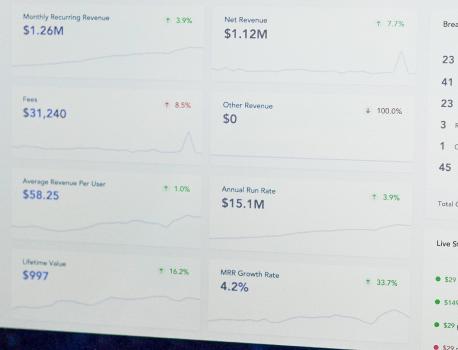Mortgages Could Be Harder to Get in a Credit-Tightening Era

April mortgage outlook
Mortgage rates have peaks and valleys, and the most recent valley was in January, when the 30-year fixed-rate mortgage averaged 6.29% in NerdWallet's survey. The 30-year mortgage climbed in February (averaging 6.63%) and again in March (6.76%).
That's a big ascent compared with the beginning of 2022, when a borrower with good credit could get a 30-year mortgage for a little over 3%. Over the same period, the Federal Reserve has raised short-term interest rates nine times in its quest to lasso inflation. That series of Fed rate hikes pushed mortgage rates upward and we'll probably see at least one more increase, with no decrease on the horizon.
In its policy statement after the March 22 federal funds rate increase, the central bank hinted that at least one more rate increase is likely, and that it expects "tighter credit conditions." In a news conference, Fed Chair Jerome Powell said his colleagues "don't see rate cuts this year. They just don't."
The Fed wants banks to pull back on lending
The Fed is sending clear signals that interest rates have room to rise even more, and that lenders are likely to become more cautious this year. As mortgage lenders take the hint and pull back, they might reduce the number of mortgages they're willing to underwrite, which means that they'll be able to resist cutting mortgage rates.
The failures of Silicon Valley Bank and Signature Bank are likely to compel lenders to be stingier when they give out loans, Powell said in his news conference. "In principle, as a matter of fact, you can think of it as being the equivalent of a rate hike or perhaps more than that," he said.
In his circumspect way, Powell seemed to be telling banks that they had better jump on the credit-tightening bandwagon: to be more careful about approving applicants for mortgages, and to think twice before reducing interest rates.
When will mortgage rates go down?
Mortgage rates have gone up in response to inflation and the Fed's rate-raising efforts to control inflation. So if the inflation rate has an unexpectedly large drop, mortgage rates might fall, too.
The next key date is the April 12 release of the consumer price index for March. If it shows that core CPI rose 5.3% or less compared with 12 months earlier, a decline in mortgage rates is possible. (The February number was 5.5%.)
Mortgage rates will settle at a lower level when there is evidence for several months in a row that the inflation rate is on its way to the Fed's target of 2%. This decrease in inflation might accompany a recession. The Fed is trying to engineer a decline in inflation without a recession, which is termed a "soft landing." The "pathway still exists" for a soft landing, Powell said in his news conference, but without a ton of conviction.
What happened in March
At the end of February, we predicted that "mortgage rates are more likely to level off or go up a little more."
Correct. The rate on the 30-year mortgage went up a little by slightly more than one-eighth of a percentage point.


